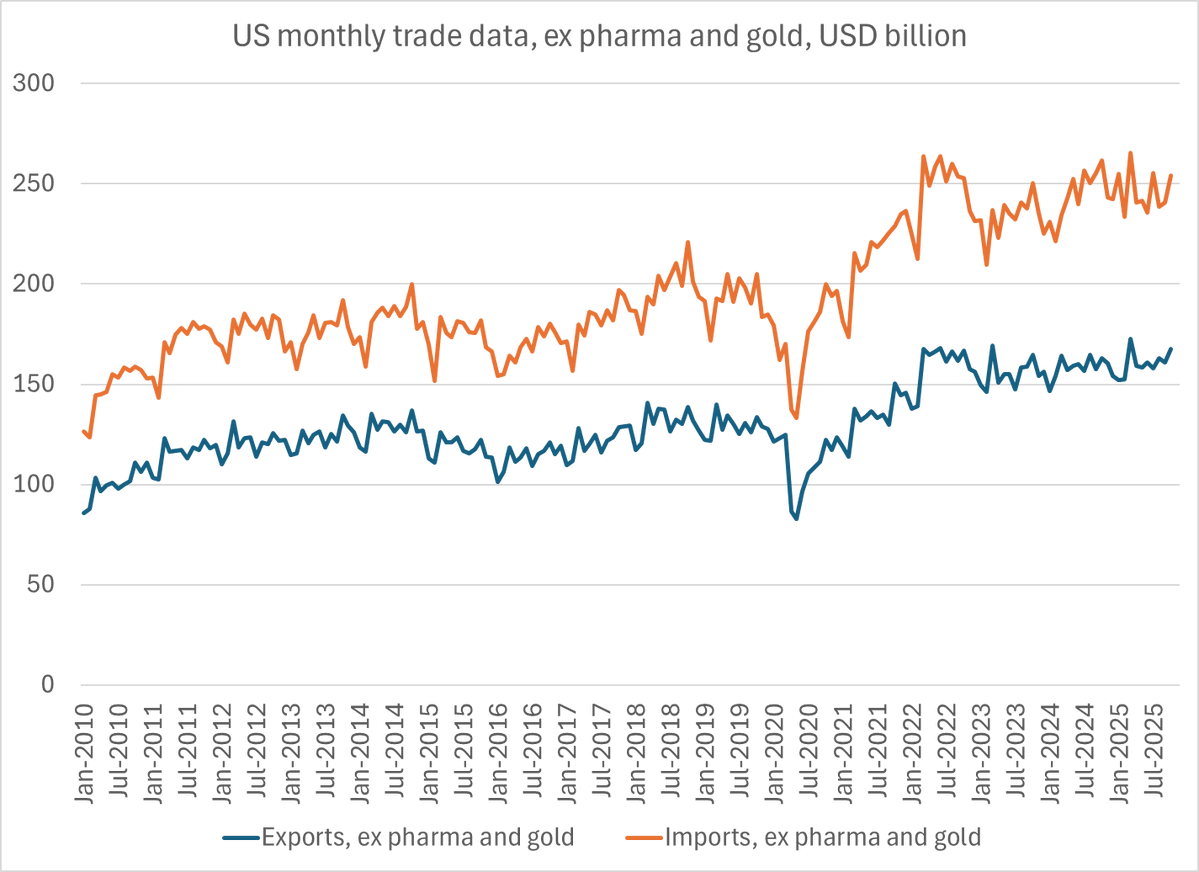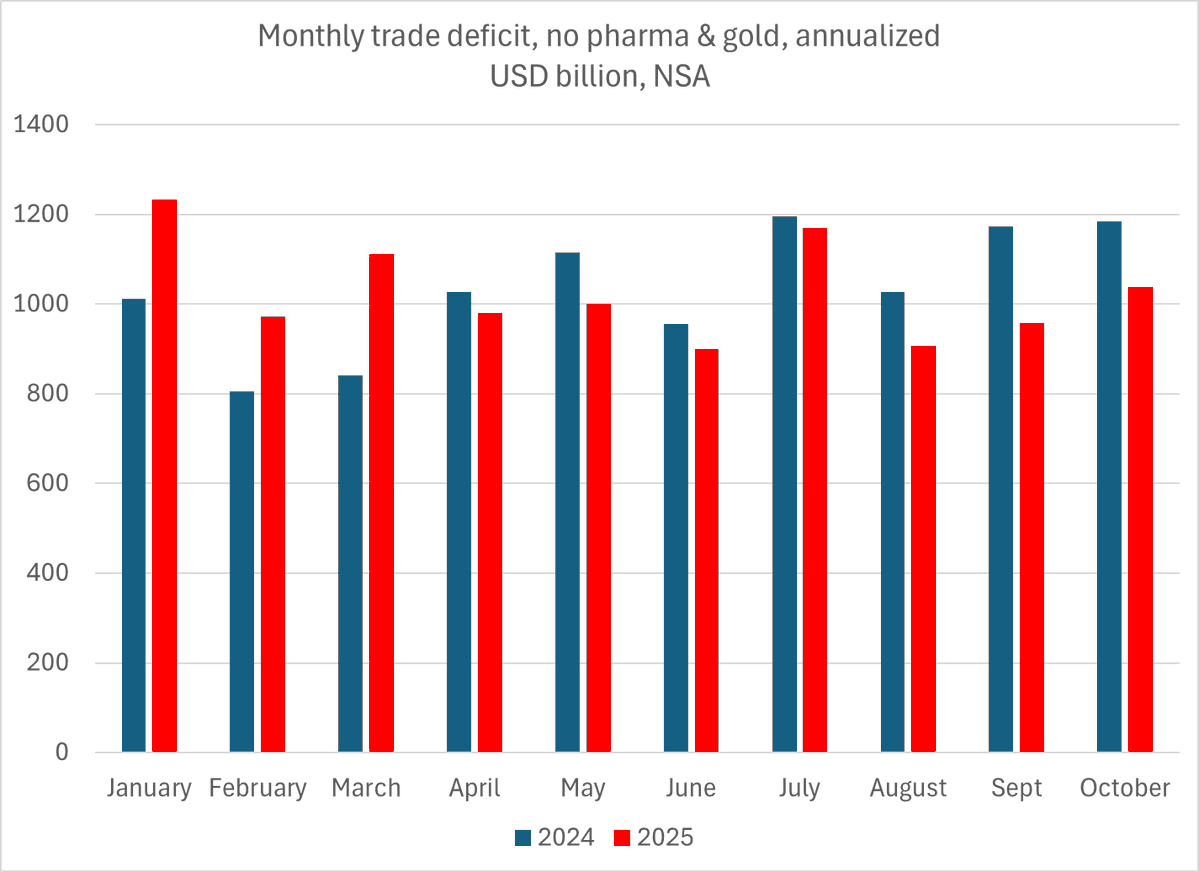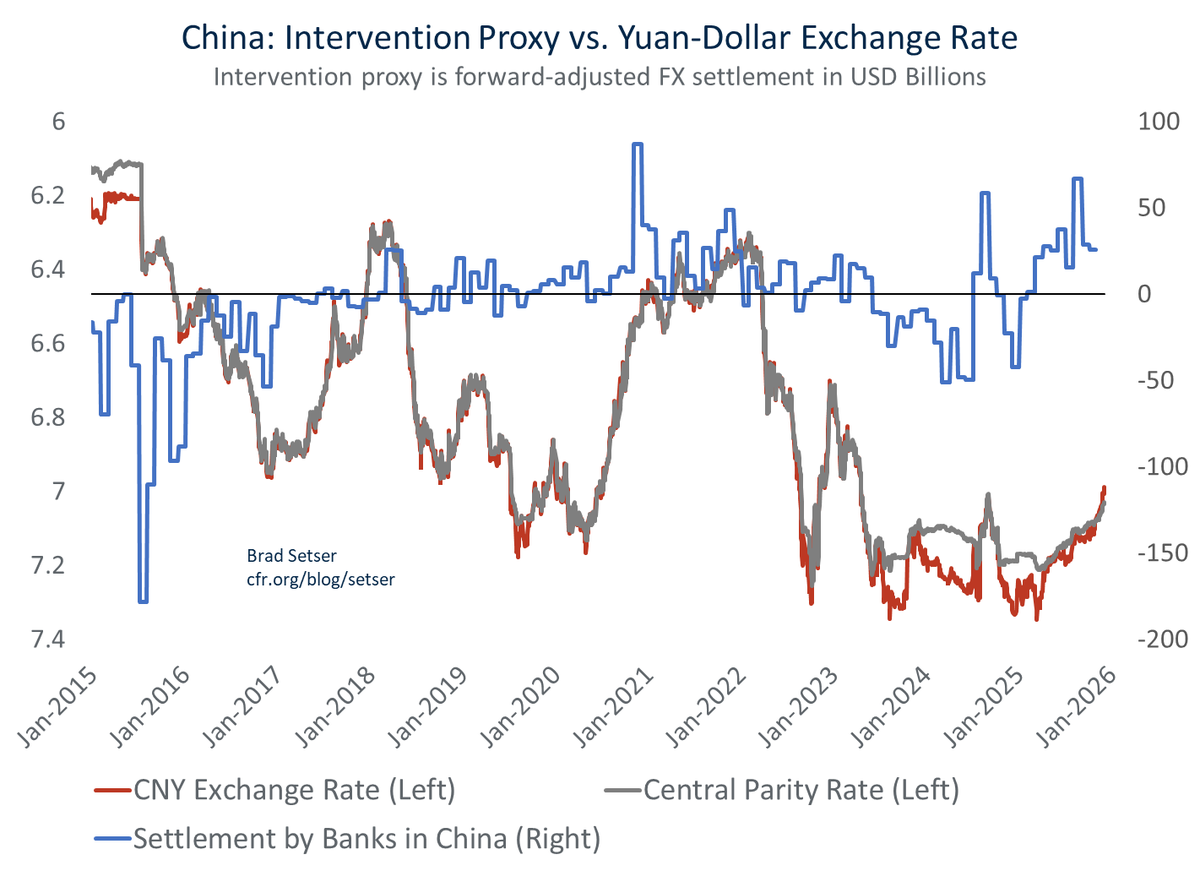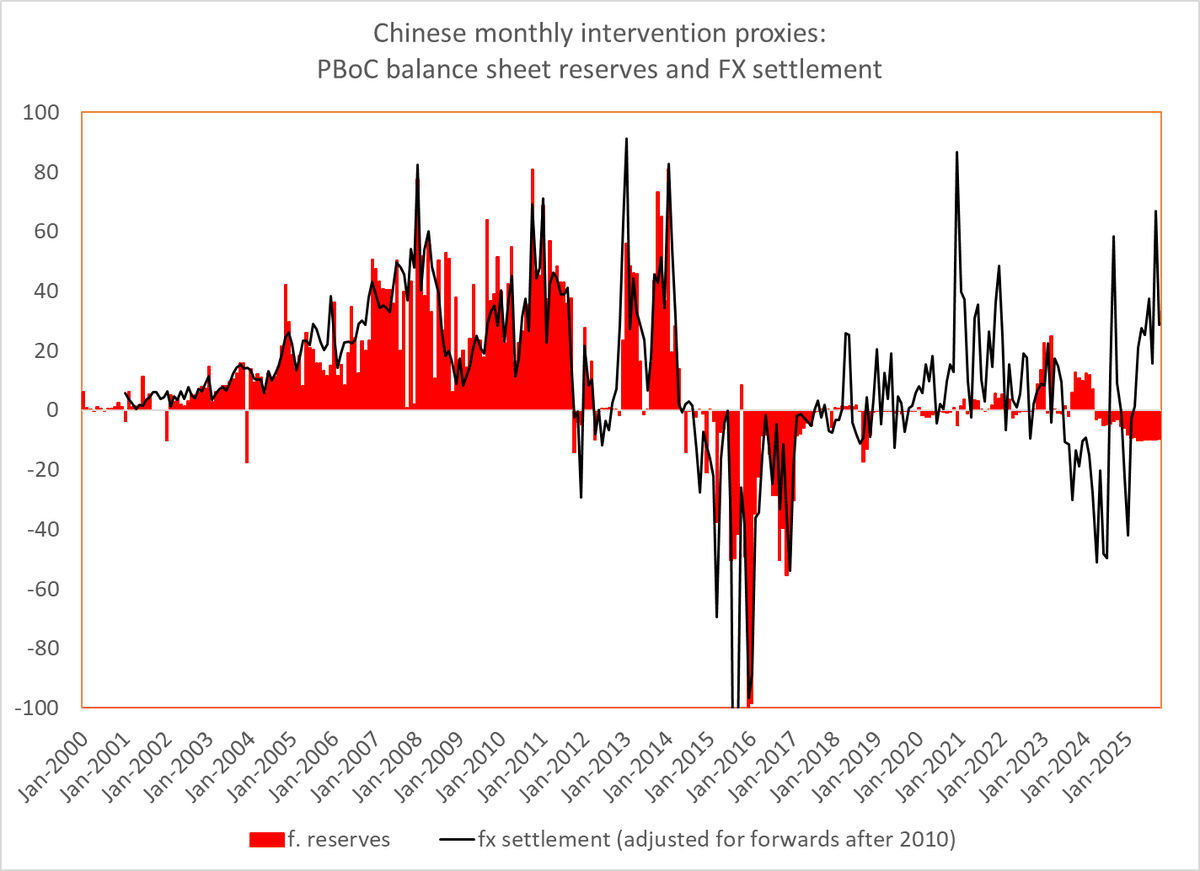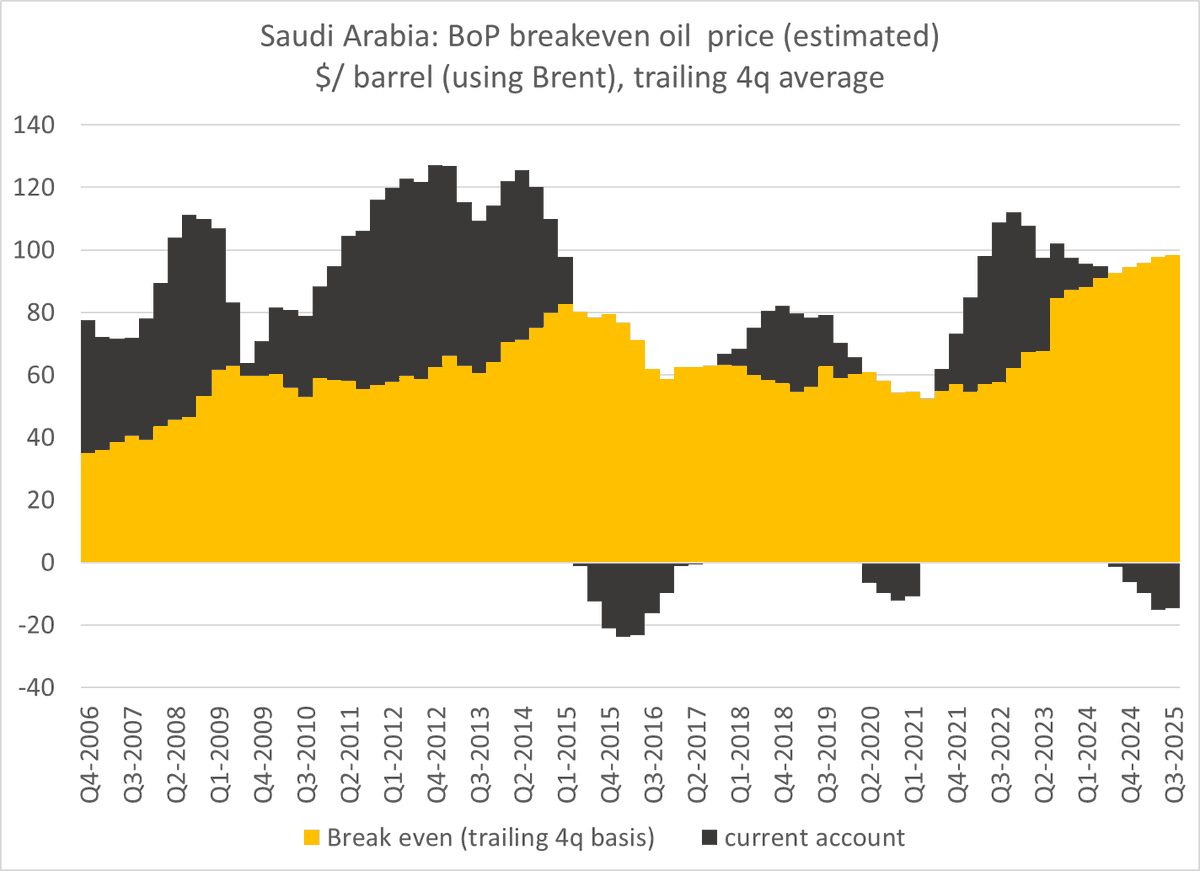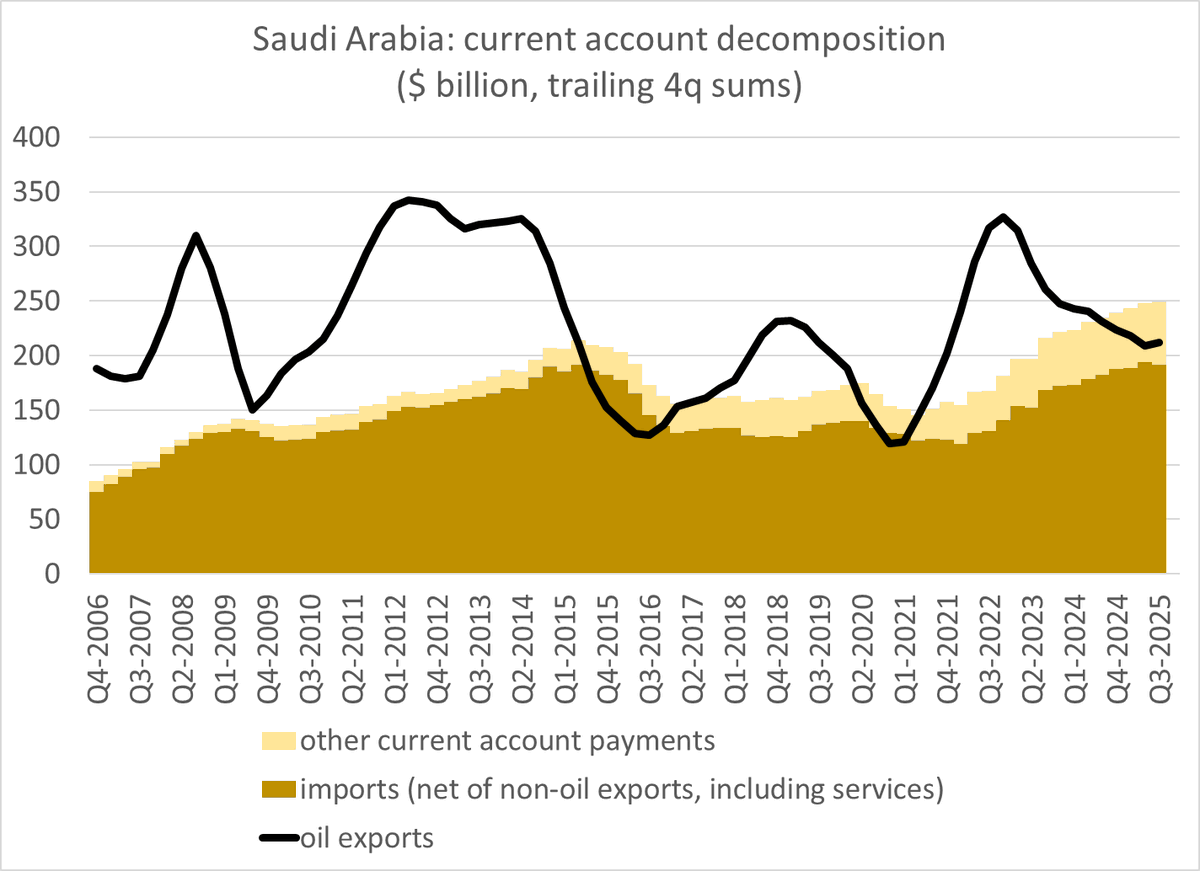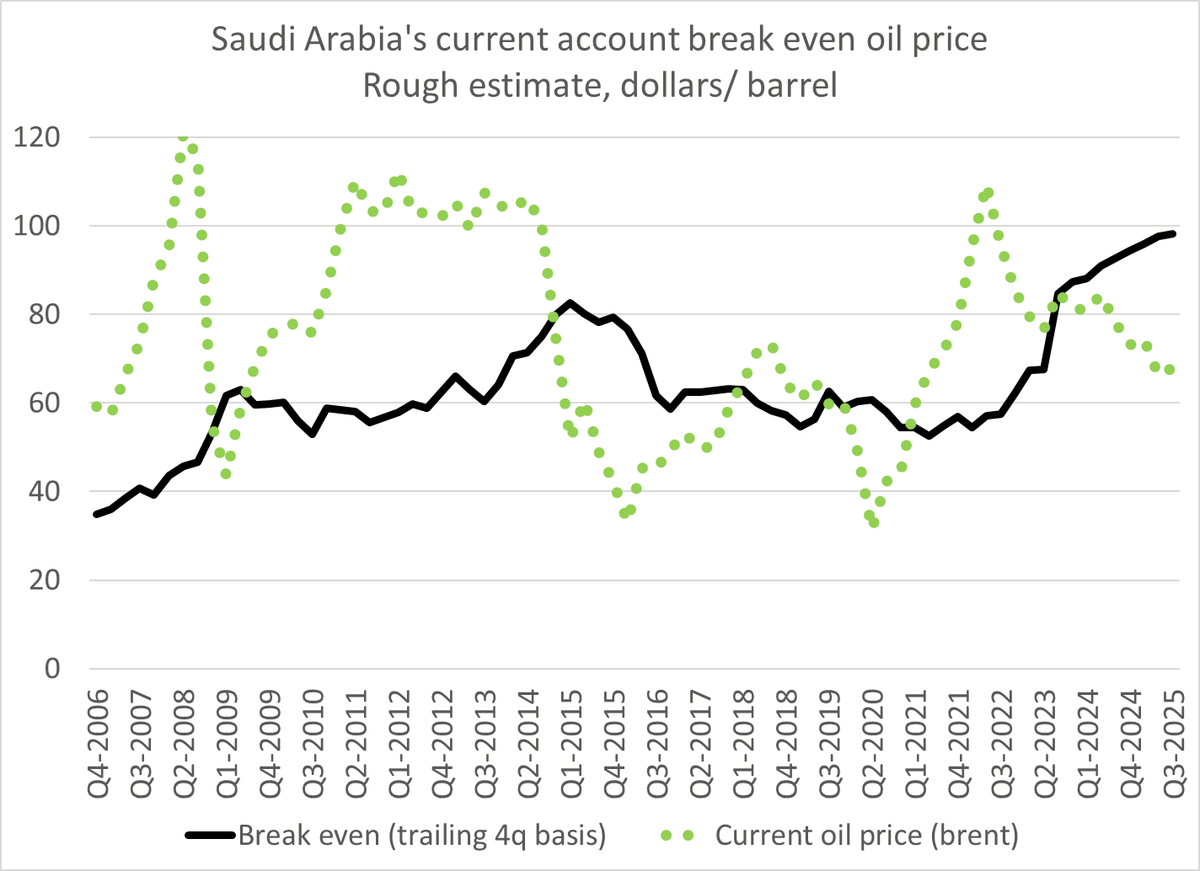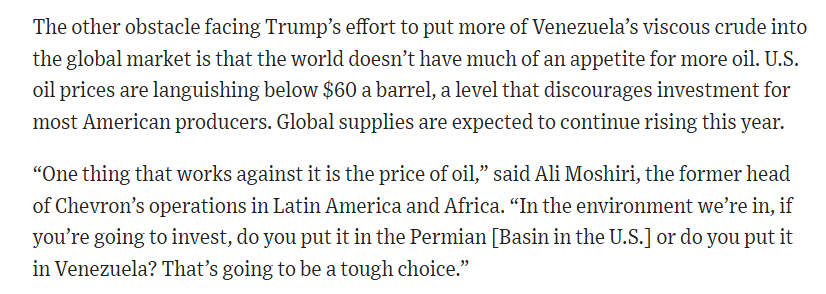Just a reminder as we head toward tomorrow's advance trade data (for September) and the more detailed release next week:
US exports to China of goods covered by the deal normally pick up in the last third of the year.
That is as predictable as the timing of the harvest ...
1/x
US exports to China of goods covered by the deal normally pick up in the last third of the year.
That is as predictable as the timing of the harvest ...
1/x

Everything has kind of been mucked up for the last two years, though, as China (famously) didn't buy any beans in 2018 (showing the power of the state importing companies).
This year though should be ... more or less normal
2/x
This year though should be ... more or less normal
2/x

As Chad Bown's detailed numbers* show, ag exports (the sept data for China now comes out early) will be back in line with their 2017 levels (helped by pork) -- but no where close to the big gains promised
*I am shocked @ChadBown included lobsters. Shocked
3/x
*I am shocked @ChadBown included lobsters. Shocked
3/x

But with manufacturing weak*, total U.S. exports are still unlikely to reach 2017 levels, let alone far exceed them.
* There is no advance data for aircraft, and I think the "deal" cheated a bit by allowing orders to count toward the total.
piie.com/blogs/trade-an…
4/x
* There is no advance data for aircraft, and I think the "deal" cheated a bit by allowing orders to count toward the total.
piie.com/blogs/trade-an…
4/x

For fun, I plotted covered exports (so no aircraft) to China as a share of US GDP over the last 10ys. To me the big story is still how undynamic they have been both before and after the "deal"
(they were about 0.4% of US GDP back in 17 ...)
5/x
(they were about 0.4% of US GDP back in 17 ...)
5/x

To paraphrase a bit, China's rapid growth shows up everywhere except in its import data
(especially of manufactures)
6/x
(especially of manufactures)
6/x
The most dynamic large manufacturing export to China is semiconductor manufacturing equipment, and that one is complicated, as, well China's imports here are a function of an industrial policy designed to reduce China's imports of chips*
7/x
7/x

*/ there may be a pull forward effect from the threat of export controls as well
8/8
8/8
• • •
Missing some Tweet in this thread? You can try to
force a refresh





